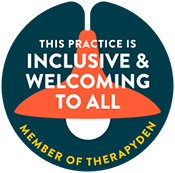In EMDR therapy, you’ll focus on past traumatic events while following guided eye movements.
This structured approach helps reprocess distressing memories and reduce their emotional impact.
This article breaks down what happens in EMDR therapy sessions, covering its phases and what you can expect.
Key Takeaways
- EMDR therapy utilizes eye movements and bilateral stimulation to process traumatic memories, focusing on altering the emotional responses associated with these experiences rather than discussing distressing details.
- The therapy is structured around eight phases, including treatment planning, preparation, assessment, desensitization, closure, and reevaluation, each contributing to a systematic approach to emotional healing.
- EMDR therapy has demonstrated effectiveness in treating PTSD and other trauma-related conditions, with research indicating rapid improvements in emotional recovery compared to traditional therapeutic methods.
What is EMDR Therapy?
EMDR therapy is a mental health treatment technique that employs eye movements to process traumatic memories. Unlike traditional talk therapy, which often involves extensive discussion of distressing issues, EMDR therapy focuses on changing the emotional responses tied to traumatic experiences.
EMDR therapy involves healing trauma or distressing life experiences by processing traumatic memories through bilateral stimulation and guided techniques during EMDR therapy sessions.
At Therapy Evolved LLC, we employ EMDR therapy as a method to assist individuals in recovering from trauma and emotional challenges through a personalized approach. This tailored approach ensures that you receive the support you need to navigate your healing journey effectively.

The Eight Phases of EMDR Therapy
EMDR therapy is structured around eight distinct phases that guide the therapeutic process. These phases ensure that the therapy is systematic and effective in addressing the complex nature of trauma.
From the initial assessment and treatment planning to the final phases of closure and reevaluation, each phase plays a crucial role in helping clients process their traumatic memories and achieve emotional healing. Let’s delve into each phase to understand how this transformative therapy works.
Phase 1: History and Treatment Planning
The first phase of EMDR therapy focuses on gathering the client’s history and developing a treatment plan. During these initial sessions, the therapist conducts an in-depth assessment, discussing the client’s history, life relationships, and possible targets for EMDR processing. The goal is to identify specific problems and symptoms that stem from those problems.
Therapists build rapport and understand the client’s history to customize the treatment plan. As a client, you provide general information instead of discussing disturbing memories in detail, creating a comprehensive plan that addresses your unique needs and prepares you for the next phases.
Phase 2: Preparation
The preparation phase focuses on building trust between the client and the therapist and achieving rapid, effective change. The therapist acts as a facilitator or guide, providing support and instruction to clients. Here, you will learn various techniques, including left/right eye movements combined with calming imagery and thoughts, to help manage emotional distress.
This phase typically lasts 1-4 sessions, which may be longer for clients with significant trauma.
Phases 3-6: Assessment to Desensitization
During the Assessment phase, clients access target memories in a controlled way, select an image, identify negative beliefs, and choose positive statements. In phases 3 to 6 of EMDR therapy, the focus is on identifying and processing a target using bilateral stimulation. Techniques such as eye movements, taps, or tones are employed to facilitate this process.
For a successful EMDR session, you must be able to recall the target memory without any body tension. During eye movement desensitization, the goal is to reduce Subjective Units of Distress (SUD) levels to zero (or 1 or 2). After bilateral stimulation, clients let their minds go blank and notice spontaneous thoughts or sensations.
In Phase 5, the focus shifts to strengthening the positive belief that replaces the original negative belief. The body scan phase involves noticing and reprocessing any residual tension in the body related to the target event. This comprehensive approach ensures that the client can process their traumatic memories effectively and foster positive self-beliefs.
Phases 7-8: Closure and Reevaluation
The Closure phase ensures each session ends positively, helping clients feel better. They are briefed on what to expect and may keep a journal to document their experiences. If processing is incomplete, self-calming techniques are advised to regain equilibrium.
The Reevaluation Phase helps therapists assess progress and determine future treatment plans. It involves exploring past events, current incidents, and future scenarios to evaluate progress, ensuring comprehensive therapy and client preparation for future situations.
What Happens During an EMDR Session?
An EMDR session is designed to be safe, warm, and welcoming to ensure client comfort. As a client, you actively determine the pace and can pause whenever necessary, making them feel in control and support.
The process involves the client focusing on traumatic memories while following the therapist’s hand movements. Clients do not need to discuss distressing details; instead, the focus is on processing emotions and behaviors associated with trauma. This method, known as movement desensitization and reprocessing, helps clients reprocess their traumatic memories without reliving the pain extensively.

Processing Traumatic Memories
Traumatic memories are often stored in a way that prevents healthy healing, resulting in a disconnect during the encoding those memories. Triggers related to traumatic events can cause overwhelming emotional disturbance due to improperly stored memories. EMDR therapy assists in the reprocessing of these traumatic memories through structured eye movements and guided recall.
Through EMDR, recalling traumatic events becomes less distressing, enabling individuals to manage their emotions better. The therapists at Therapy Evolved focus on processing difficult memories, aiming to reduce their negative impact and foster emotional recovery. This process helps clients differentiate the past trauma from their current feelings, allowing for a healthier emotional response.
EMDR therapy focuses on identifying and transforming negative cognitions into positive ones to facilitate emotional healing. The development of positive self-concepts is crucial for fostering personal growth and emotional well-being. Positive beliefs enhance resilience and coping ability, providing a solid foundation against life’s challenges.
Emotional and Physical Responses in EMDR
It is common for participants to feel a range of emotions, including tears, anger, and grief, during or after sessions. The emotional and physical responses during EMDR sessions can lead to a cleansing experience, allowing for healing after expressing long-held grief. Many individuals experience fatigue during EMDR sessions as they engage in intense emotional processing.
Some people may experience physical sensations like nausea or tension as they process their memories and body sensations. Less frequently, clients might physically re-experience parts of their trauma, though it tends to be less intense than the original event. These responses are a normal part of the healing process and indicate that the therapy is working effectively.
The Role of Positive Beliefs in EMDR
In EMDR therapy, positive self-beliefs need to be deeply felt. They must be understood beyond just an intellectual level. Negative core beliefs, often rooted in trauma, can impede progress in therapy by creating resistance and self-doubt. The eight phases of EMDR aim to identify negative triggers, process trauma, and instill positive self-beliefs.
Effectiveness of EMDR Therapy
EMDR therapy is effective and can provide quicker results compared to many traditional therapeutic methods. Randomized controlled trials indicate positive outcomes for EMDR therapy in addressing emotional trauma and adverse life experiences. The World Health Organization recommends EMDR therapy as an effective treatment for PTSD and other trauma-related conditions.
Research results indicate that EMDR therapy can help a person faster than many other methods. For example, 77% of combat veterans were free of PTSD after 12 EMDR sessions, and 100% of single-trauma victims no longer had PTSD after six 50-minute EMDR sessions, according to a study funded by Kaiser Permanente.
These statistics highlight the effectiveness of EMDR therapy in treating post traumatic stress disorder and other trauma-related conditions.
Things to Know Before Starting EMDR Therapy
Before starting EMDR therapy, understanding the treatment is crucial. Research shows EMDR is effective for PTSD and various psychological conditions from unprocessed memories. You may keep a journal between sessions to document thoughts and feelings.
After sessions, individuals may experience vivid dreams or heightened sensitivity to stimuli. These responses are normal and indicate therapy is working. Communicating any concerns or experiences with your therapist ensures the best possible outcome.

Choose Therapy Evolved LLC for Personalized EMDR Therapy
Experience professional EMDR therapy from the comfort of your home. At Therapy Evolved LLC, we provide secure and effective telehealth services across Massachusetts, ensuring you can access the help you need without the hassle of travel.
Whether you’re navigating trauma, anxiety, or life transitions, our licensed therapists are here to guide you on your healing journey with evidence-based approaches tailored to your unique needs.
With our telehealth platform, you’ll receive the same compassionate care and expert guidance as an in-person session. Connect with us online and begin the process of transforming challenges into growth—all in a safe, private, and convenient environment. Your path to healing has never been more accessible.
Why Choose Therapy Evolved LLC?
We are more than a EMDR therapy provider; we are your dedicated partners in mental wellness. At Therapy Evolved LLC, we blend clinical expertise with a personalized touch, focusing on your unique story and needs. Our commitment to empathy, respect, and innovative treatment methods sets us apart, ensuring you receive care that truly makes a difference.
Specializing in EMDR therapy, we provide transformative solutions for PTSD, anxiety, and more. Our therapists are not only highly qualified but also deeply invested in your well-being. When you choose us, you’re choosing a supportive and empowering path toward a better life.
Your Journey to Healing Starts Here
Recovery begins with a single step, and at Therapy Evolved LLC, we make that step simple and empowering. Start with a friendly consultation, where our therapists will attentively understand your challenges and aspirations. From there, we’ll design a therapy plan that aligns perfectly with your goals.
We’ll be there with ongoing support throughout your journey, helping you overcome obstacles and celebrate milestones. Together, we’ll work toward restoring balance, joy, and resilience in your life.
Our tailored telehealth sessions ensure you receive the care you need in a safe and comfortable setting. Schedule your consultation today.
Frequently Asked Questions
What is EMDR therapy?
EMDR therapy is an effective mental health treatment that uses guided eye movements to help individuals process traumatic memories, promoting healing from trauma and distressing experiences.
What happens during an EMDR session?
During an EMDR session, clients concentrate on traumatic memories while tracking the therapist’s hand movements, which helps facilitate the processing of these memories without extensive discussion of distressing details. This approach aids in alleviating the emotional distress associated with the memories.
How effective is EMDR therapy?
EMDR therapy is highly effective, demonstrating significant reductions in PTSD symptoms and emotional distress within just a few sessions. This evidence supports its value in treating trauma-related conditions.
What should I know before starting EMDR therapy?
Before starting EMDR therapy, be aware of the potential for vivid dreams or increased sensitivity following sessions, and consider maintaining a journal to track your experiences. This preparation will enhance your therapeutic journey.
Conclusion
EMDR therapy offers a structured and effective approach to healing from trauma and distressing life experiences.
By understanding the eight phases of EMDR therapy, clients can be better prepared for the journey ahead and know what to expect during their sessions. From the initial treatment planning to the final reevaluation, each phase plays a crucial role in fostering emotional healing and resilience.
At Therapy Evolved, clients receive personalized care from qualified therapists who are dedicated to supporting their mental health journey.
With a combination of traditional and teletherapy services, we ensure you have access to the best possible care tailored to your unique needs. If you’re considering EMDR therapy, Therapy Evolved is a trusted partner in your path to healing.

